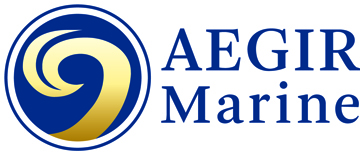CapGemini (2012) finds that measuring firms along their digital intensity and transformation management intensity yields four categories of firms and industries. These are “digital beginners”, who score low on both digital intensity and transformation management intensity, “digital conservatives” who score high on the latter but low on digital intensity, “digital fashionistas” who score high on digital intensity but low on transformation intensity, and “digirati”, who score high on both. The crux of the report is that digirati perform better, and how firms can become digirati. Unsurprisingly, high-tech and retail industries generally fall into that category, while for example manufacturing is a beginner.
In general, heavy industry firms have been slow to adopt digitization. They operate in asset-heavy industries, and either believe that they are safe from disruption, that digitization will not have a large impact (if any) on their industry, and are even culturally reluctant to transform to a new way of way. Of course, they are wrong. Frontrunners like GE have already demonstrated how integrating various digital technologies in industry, characterized as “Industry 4.0”, can add tremendous value for customers.
One other, smaller company that is now looking to take their first steps towards using cutting-edge technologies to beat the competition is Dutch maritime service firm AEGIR-Marine. AEGIR’s core business if performing various after-market maintenance on ship propulsion systems and stern tube seals. It doesn’t sound like the sexiest industry, but the company is now experimenting with one of the flashiest new digital technologies: Augmented Reality (AR).
In particular, AEGIR is looking to use AR in two novel ways. The first is for training purposes. As this video demonstrates, AR makes it possible to look inside ship propulsion systems, while they are running. This gives insight into the functionality of such a system that was previously hidden. Secondly, AR goggles can assist service engineers during every step of the way of a repair job. Further applications await, and will surely add yet more value.
AEGIR’s case demonstrates that even the most unlikely candidates for digitization can often find new ways to augment their business, even if the gains initially seem small. After all, in today’s dynamic business environment, every little bit of value counts.
Capgemini Consulting. (2012). The Digital Advantage: How Digital Leaders Outperform their Peers in Every Industry. MIT Sloan Management Review, 1–24. Retrieved from http://www.capgemini.com/resource-file-access/resource/pdf/The_Digital_Advantage__How_Digital_Leaders_Outperform_their_Peers_in_Every_Industry.pdf
Lasi, H., Fettke, P., Kemper, H. G., Feld, T., & Hoffmann, M. (2014). Industry 4.0. Business and Information Systems Engineering, 6(4), 239–242. http://doi.org/10.1007/s12599-014-0334-4
Maritime Technology (2017). AEGIR Marine opened its new Propulsion Workshop, R&D Center and AEGIR Academy. https://maritimetechnology.nl/en/aegir-marine-opened-its-new-propulsion-workshop-rd-center-and-aegir-academy/

